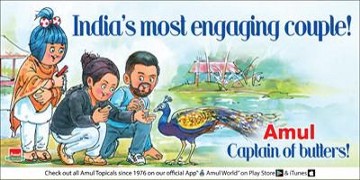Amul was formed in 1946 as a Dairy Cooperative based in Anand, Gujarat. Amul spurred India’s White Revolution, making the country the world’s largest producer of milk and milk products. In the process, Amul became the most significant food brand in India and has ventured into markets overseas. Amul product portfolios are based on bread spreads, milk drinks, fresh milk, powder milk, cheese, and desserts.
Let us dive into how technology, systems, and marketing has made Amul the milk giant of India.
The Beginning
Amul was formed as a part of a cooperative movement against Polson Dairy in Anand, Gujarat. Everyone except the farmers benefited from the setup. Soon the matters went into the hands of late Sardar Patel which led to the formation of the Kaira District Co-operative Products’ Union in Anand.
The union started pasteurizing milk produced by a handful of farmers for the Bombay Milk Scheme and grew to 432 farmers by the end of 1948. The rapid growth led to problems including excess production that the Bombay Milk Scheme couldn’t accommodate. To solve this issue, a plant was set up to process all that extra milk into milk powder and butter products.
Efficient Operations
Amul has constantly been innovating; launching new products, creating marketing campaigns, or challenging traditional societal trends to come up with better ones. With its three-tier cooperative structure, they have transitioned from traditional operations to a more cost-efficient and effective system.
Milk is collected at the village dairy society, obtained and processed at the district milk union, and marketed at the state milk federation. The model ensures that there is efficiency and swiftness in operations. With this, the Amul model has helped India become the largest milk producer in the world.
For its continuous innovation, Amul won the “CNN-IBN Innovating for Better Tomorrow Award” and “World Dairy Innovation Award” in the year 2014.
Embracing Technology
For Amul, technology has been critical for its survival as one of India’s biggest CPG companies. Every single aspect of their complex supply chain has been integrated through technology, enabling them to have visibility at each step. These insights are crucially allowing the dairy company to know, for instance, which village was not contributing to the supply of milk, which tanker wasn’t operational or which of the 200 chilling stations were working at optimal capacity, etc.
In the past decade, Amul’s digital transformation has helped it gain a 10x growth in business. By improving data accuracy and integration with the distributor management system, processes are seamless now. Coupled with mobile applications and automation that efficiently manage applications, Amul has better operations and gained much-needed insight into the logistics side of things.
The next wave is tied to the rise of technologies in AI and ML, the future is in tech-enabled agile CPG operations. Visibility of operations and performance can now be data-driven like never before.
In a country like India, more than 90% of CPG purchases and revenue generation occurs at small mom & pop shops. It is clear by Amul’s focus areas that only those CPG companies will survive, which invest in tech-based solutions. But how and whom to partner up with?
We are here for you. Retail Pulse is built for CPG companies and retailers in developing markets; Retail Pulse offers an AI-based solution to tap into the immense data in every mom & pop shop and give deep store analytics and insights based on the data generated via photos taken by the smartphones of CPG company’s sales reps.
Amul, most trusted and long-standing brand
In 1966, Amul hired Sylvester da Cunha, the managing director of an advertising agency, to design an Amul Butter ad campaign. DaCunha created the campaign as a series of hoardings with topical ads that related to day-to-day issues. It got very popular and earned a Guinness World Record for the longest-running ad campaign in the world.
The Amul girl is the advertising mascot used by the company to promote the brand. The Amul girl is used to insert an element of humor into its print ads easily making a connection with the mass population.
In a recent interview Mr. R S Sodhi, MD GCMMF (Amul), at the Kyoorius event, explains how Amul has become a highly trusted brand in India. “Companies tend to exploit loopholes in the Indian food laws and reduce the cost of production by replacing expensive ingredients with cheaper alternatives,” he noted. “Amul does not do that, it does not short-change consumers and that is how it has won their trust.”
He further talks about how market segmentation and product positioning does not matter to Amul.“For example, Amul butter is consumed by millionaires living in big cities as well as by autorickshaw drivers living in small towns, the perception of the brand is like that.”
We at Retail Pulse are in the business to derive the data from such markets and help CPG brands like Amul accelerate their sales via smart tech.






